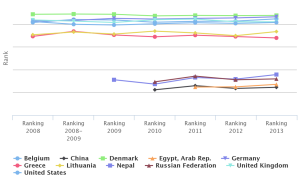(Cross-posted from CREW)
Last week, the House of Representatives held its third annual Legislative Data and Transparency Conference. The full-day symposium, which took place in the U.S. Capitol, featured speakers from inside and outside government who discussed efforts to make more legislative information available to the public, particularly in machine-readable formats.
The event was sponsored by the Committee on House Administration and included staff from House leadership offices (of both parties), the Clerk’s office, the Government Printing Office, the Library of Congress, the Office of Law Revision Counsel, the Office of Legislative Counsel, and other personal and committee offices. In addition, a number of outside groups made presentations, including the Congressional Data Coalition, a consortium of civic organizations, civic hackers, businesses, trade associations, librarians, and others who support better public access to legislative data. The event was live-streamed, and video will be made available on the Committee on House Administration’s website.
While the event was jam-packed with interesting information, three items particularly stood out.
First, the conference itself is the ongoing manifestation of the House of Representatives’ collective efforts to make its activities more open and transparent to the public. For proof, one merely needs to look to the series of annual transparency conferences, the ongoing meetings of the Legislative Bulk Data Task Force, the recent Legislative Branch Appropriations Bill, the creation of docs.house.gov, the ongoing upgrades to rules.house.gov, the updated version of the U.S. code, and so on.
Second, real progress is being made on one of the thorniest but singularly important issues: Is it possible to show, in real-time, how an amendment would change a bill and how draft legislation would change the law? For a number of technical reasons, building a solution to these questions is particularly difficult in the U.S. Congress. However, the House has made real progress in doing just that. For the details, watch the HOLC/OLRC Modernization and Next Steps presentation given by Ralph Seep, Sandra Strokoff, and Harlan Yu.
Finally, there is a growing sense of partnership and camaraderie among people who are working to make legislative information more widely available regardless of whether they are inside or outside government. Sometimes the work of people outside government is paving the way for innovations inside government. Other times, efforts by those inside government allow those of us on the outside to build clever new services and tools. In many respects, there is a real give-and-take. This is what progress looks like.

